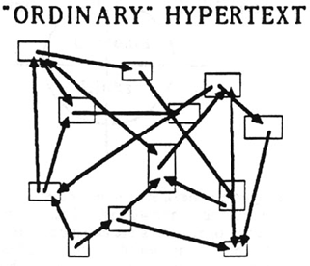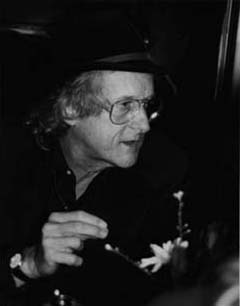NewMedia History : is it that new (5) ?
Ted Nelson | Hypertext <1963>Samuel Taylor Coleridge's poem Xanadu, "a magic place of literary memory,"1963 : the words "hyperlink", "hypertext" and "hypermedia"Xanadu : a system of non-sequential writing"the structures of ideas are not sequential."NB. Is it such a good idea ?As a graduate student in philosophy in the late1950s and early 1960s, Ted Nelson had two critical intellectual encounters that led him to become one of the most influential figures in computing. One was with Vannevar Bush's article As We May Think, which convinced him that emerging information technologies could extend the power of human memory. The second was with Samuel Taylor Coleridge's poem Xanadu, "a magic place of literary memory," in Nelson's words, that provided him with the image of a vast storehouse of memories, and which served as the inspiration for his life's work. From these influences, Nelson began his quest to build creative tools that would transform the way we read and write, and in 1963 he coined the words "hypertext" and "hypermedia" to describe the new paradigms that these tools would make possible. Nelson was particularly concerned with the complex nature of the creative impulse, and he saw the computer as the tool that would make explicit the interdependence of ideas, drawing out connections between literature, art, music and science, since, as he put it, everything is "deeply intertwingled." Nelson's critical breakthrough was to call for a system of non-sequential writing that would allow the reader to aggregate meaning in snippets, in the order of his or her choosing, rather than according to a pre-established structure fixed by the author. |
Working outside of the academic and commercial establishments, following his own strongly held convictions, Nelson devised an elaborate system for the sharing of information across computer networks. Called Xanadu, this system would maximize a computer's creative potential. Central to Nelson's approach was the "hyperlink," a term he coined in 1963, inspired by Bush's notion of the Memex's associative trails. Hyperlinks, he proposed, could connect discrete texts in non-linear sequences. Using hyperlinks, Nelson realized, writers could create "hypertexts," which he described as "non-sequential writing" that let the reader make decisions about how the text could be read in other than linear fashion. As he observed in his landmark book from 1974, Computer Lib/Dream Machines, "the structures of ideas are not sequential." With hypertext, and its multimedia counterpart, "hypermedia," writers and artists could create works that encouraged the user to leap from one idea to the next in a series of provocative juxtapositions that presented alternatives to conventional hierarchies.

